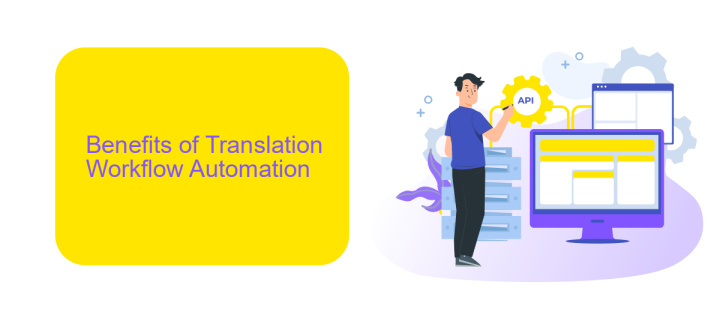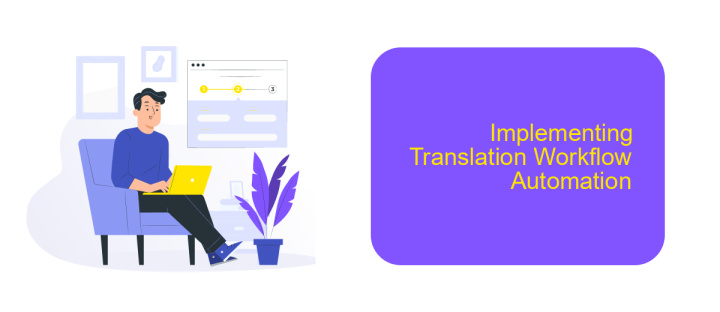Translation Workflow Automation
In today's globalized world, the demand for efficient and accurate translation services is higher than ever. Translation workflow automation leverages advanced technology to streamline the entire translation process, from initial text analysis to final quality assurance. By automating repetitive tasks, businesses can save time, reduce costs, and ensure consistent, high-quality translations across multiple languages and platforms.
Introduction to Translation Workflow Automation
Translation Workflow Automation is an essential aspect of modern translation processes, designed to streamline and enhance the efficiency of translating content across multiple languages. By automating repetitive tasks, businesses can reduce human error, save time, and improve overall productivity.
- Automated content extraction and insertion
- Integration with various translation management systems
- Real-time collaboration and updates
- Quality assurance and consistency checks
One of the key components in achieving seamless translation workflow automation is the integration of various tools and platforms. Services like ApiX-Drive facilitate these integrations by connecting different systems, allowing for smooth data transfer and synchronization. This ensures that all stakeholders have access to the latest updates, making the translation process more cohesive and efficient.
Benefits of Translation Workflow Automation

Translation workflow automation offers numerous benefits, enhancing both efficiency and accuracy in the translation process. By automating repetitive tasks, such as file management, content extraction, and quality checks, businesses can significantly reduce the time and effort required for translations. This allows translators to focus on the more nuanced aspects of their work, leading to higher quality translations and faster turnaround times. Additionally, automation minimizes the risk of human error, ensuring consistency and reliability across all translated materials.
Integration with various tools and platforms is another key advantage of translation workflow automation. Services like ApiX-Drive enable seamless integration between different applications, allowing for smooth data transfer and synchronization. This not only streamlines the workflow but also enhances collaboration among team members, regardless of their location. By leveraging such integrations, companies can create a more cohesive and efficient translation process, ultimately leading to improved productivity and better outcomes for their global communication efforts.
Types of Translation Workflow Automation Tools

Translation workflow automation tools are essential for improving efficiency and accuracy in multilingual projects. These tools can be broadly categorized into several types, each serving a specific function in the translation process.
- Translation Management Systems (TMS): These platforms streamline the entire translation process, from project initiation to final delivery, by automating workflows and managing resources.
- Computer-Assisted Translation (CAT) Tools: These tools help translators by providing features like translation memory, terminology management, and real-time suggestions, significantly speeding up the translation process.
- Machine Translation (MT) Engines: These systems use artificial intelligence to automatically translate text, which can then be post-edited by human translators for improved quality.
- Integration Tools: Services like ApiX-Drive facilitate the seamless integration of various translation tools and platforms, ensuring smooth data flow and reducing manual intervention.
By leveraging these types of translation workflow automation tools, organizations can achieve higher productivity, better consistency, and faster turnaround times in their translation projects.
Implementing Translation Workflow Automation

Implementing translation workflow automation can significantly streamline the process of managing multilingual content. The first step is to evaluate your current workflow, identifying repetitive tasks that could benefit from automation. This will help in understanding which parts of the process need optimization.
Once the evaluation is complete, selecting the right tools and platforms becomes crucial. Platforms like ApiX-Drive can facilitate seamless integration between different translation tools and content management systems. This ensures that your workflow remains smooth and efficient.
- Identify repetitive tasks in your current workflow.
- Select appropriate tools and platforms for automation.
- Integrate these tools using services like ApiX-Drive.
- Test the automated workflow to ensure it meets your needs.
After setting up the automated workflow, continuous monitoring and optimization are essential. Regularly review the performance of your automated processes to identify any areas for improvement. This will help maintain a high level of efficiency and accuracy in your translation projects.
- Automate the work of an online store or landing
- Empower through integration
- Don't spend money on programmers and integrators
- Save time by automating routine tasks
Best Practices for Translation Workflow Automation
To achieve efficient translation workflow automation, it's essential to start by selecting the right tools and platforms. Choose a translation management system (TMS) that offers robust features like real-time collaboration, version control, and integration capabilities. Implementing a TMS that supports multiple languages and file formats can significantly streamline your workflow. Additionally, ensure that your chosen system can integrate seamlessly with other tools you use, such as content management systems (CMS) and marketing platforms.
Integration is a key component of a successful automated workflow. Services like ApiX-Drive can facilitate these integrations by connecting your TMS with various applications, automating data transfer, and reducing manual tasks. It's important to set up automated notifications and quality checks to maintain high standards. Regularly review and update your automated processes to adapt to new technologies and changing project requirements. By following these best practices, you can enhance efficiency, reduce errors, and ensure consistent quality in your translation projects.
FAQ
What is Translation Workflow Automation?
How can Translation Workflow Automation improve efficiency?
What are the key components of a Translation Workflow Automation system?
How do I integrate Translation Workflow Automation into my existing processes?
What are the benefits of using a service like ApiX-Drive for Translation Workflow Automation?
Time is the most valuable resource for business today. Almost half of it is wasted on routine tasks. Your employees are constantly forced to perform monotonous tasks that are difficult to classify as important and specialized. You can leave everything as it is by hiring additional employees, or you can automate most of the business processes using the ApiX-Drive online connector to get rid of unnecessary time and money expenses once and for all. The choice is yours!


